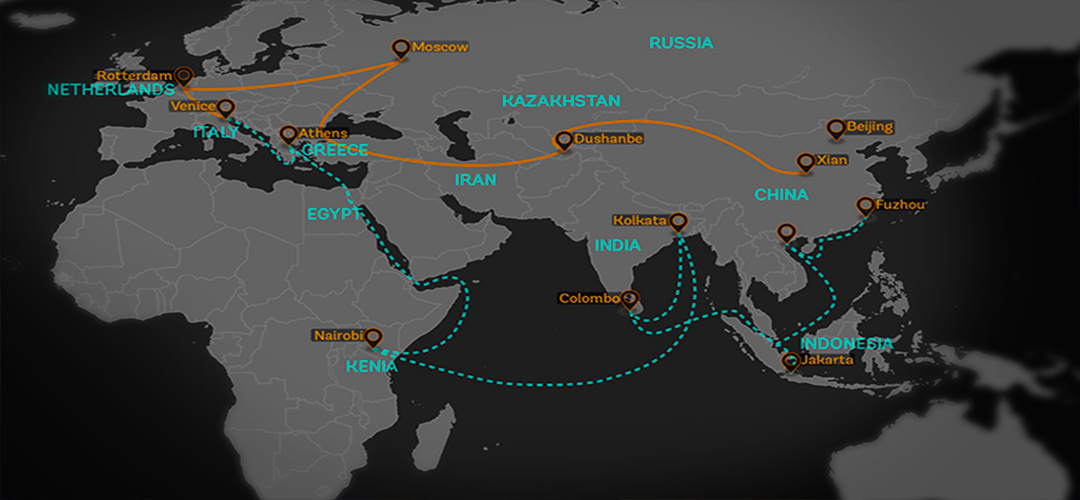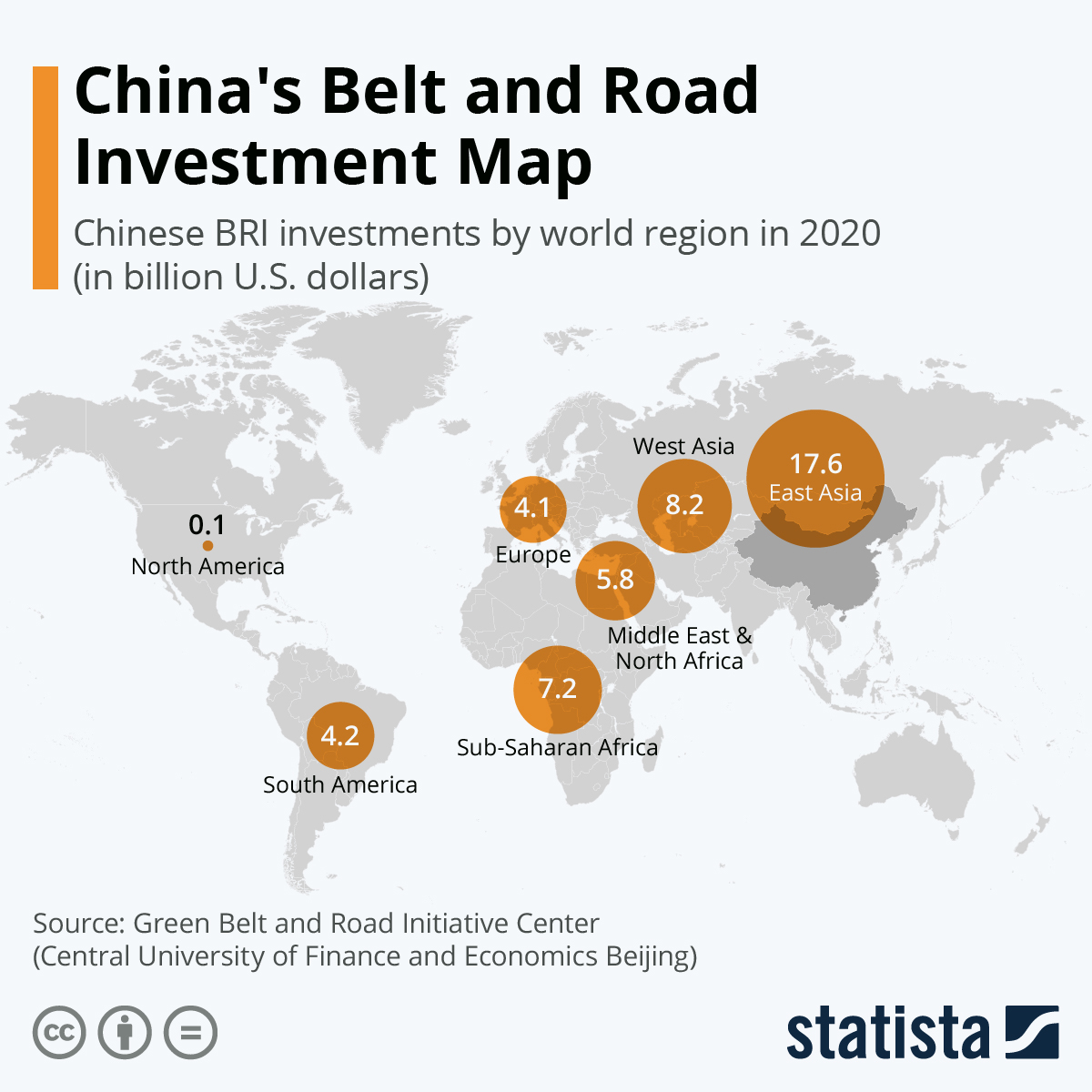BRI: A NUANCED EVOLUTION
October 1, 2022 | Expert Insights

China’s Belt and Road Initiative (BRI) must be viewed in a more nuanced light than just a global mega infrastructure project aimed at generating profits for the Chinese public and private sectors.
This is best symbolised by the controversial Colombo Lotus Tower completed in 2019 under BRI. It took seven years and over $100 million to construct this highest self-supporting tower in South Asia. Now its critics, both at home and abroad, call it a ‘white elephant’ incapable of meeting its functional objective of providing communications. As mounting debts exacerbated the economic situation in Sri Lanka, the Lotus Tower drew public ire for alleged corruption and short-sightedness on the part of Sri Lankan leadership in its conceptualisation and construction. Apparently, the Chinese company to whom the funds for its construction were transferred has vanished without a trace!
However, the connection of the Lotus Tower with Buddhist thought underscores the deep and ancient linkages between modern China and Sri Lanka that both sides play upon, taking its significance beyond a mere structural marvel, despite its functional limitations.
Background
The BRI has an impressive worldwide footprint adopted through over 215 cooperation documents signed with 149 countries and 32 international organisations since 2013. However, it has an extremely nuanced and distinct evolution in focus and objective. It has its roots in the 1980s when China carried out far-reaching market-economy reforms aimed at modernity and economic development under Deng Xiaoping. This propelled the Chinese economy from amidst the middling ones to rank second globally within the next two decades. The engine of this growth was a massive infrastructure push which concentrated on its cities, ports, expressways, railways, etc. in the initial few years.
Encouraged by the success on the domestic front, China’s BRI tentatively ventured first into its immediate neighbourhood before plunging whole scale into a global infrastructure drive with its credo of building a ‘human community of shared destiny’.

Analysis
In her seminal book of 2021, China’s Communication of the Belt and Road Initiative: Silk Road and Infrastructure Narratives, Carolijn van Noort describes six broad and distinct sets of modalities evident in China’s current projects.
The spatial one describes the connectivity between countries and continents, between land, air, sea and even space which enables the free and convenient movement of people, goods and technology across borders and domains. China's BRI also includes the fifth domain of cyber or digital space, thus covering all possible media and enabling the flow of knowledge.
The temporal one stresses modernisation. It encourages innovations to build on existing historical relics indicating progress, development and improvement over the past. This also provides the enchantment which accompanies infrastructure that dramatically increases the speed of travel and transportation. China has also been playing on public sentiments of overthrowing or removing reminders of the colonial (ergo, servile and shameful) past, thereby assisting countries like Kenya to move towards their future aspirations and even become a new nation.
The political one is an umbrella of numerous subtler intertwined aspects such as territorial sovereignty (border structures) with regional integration (cross border highways), peace from security structures with militarisation or infrastructural violence, ideological expressions (socialist/developmental capitalist) with aesthetics, symbolism and even ‘imagineering’ of national identity. While most of these are considered to be demand-driven, some are top-down directives from the leaders in power.
The economic one, which was the earliest and still the most widely acknowledged, is aptly worded in a joint communique that states that cooperation is based on the “conviction that contributes to growth, economic and social development, trade in goods and services, as well as investment and creating employment opportunities”.
The technological one emphasises human dominance over nature and the overcoming of backwardness through smart and greenways employing advanced scientific and technological methods and devices. China also positions itself as a country setting standards for cooperation across borders and facilitating capacity building and knowledge transfer.
The final one is perception which comes from these projects being visible and influencing the emotions of fear, anticipation, dreaming and longing or even forms of desire and fantasy.
Counter View
There are numerous counter-narratives against China's thrust to accommodate all these modalities. These include the un-broadcasted nature of multi-national agreements forcing countries towards a China-centric framework, the removal of economically still-useful colonial assets, of countries being underwhelmed by projects which are delayed or stalled irrespective of the reasons, fear of debt-trapping, land-grabbing, unchecked Chinese influence, unfair labour practices, human rights violations and security encroachments.
The Sri Lankan Lotus Tower appears to have catered to the temporal, political and perspective modalities. American scholar Patrick Mendis who grew up in Sri Lankan Catholic and Buddhist environs, brings out in his article of Mar 2018 - Journey to the Colombo Lotus Tower- the deeper essence of merging and even placing Lankan Buddhist beliefs over Confucian thought, which China has successfully integrated with its own Buddhist and Daoist philosophies.
Assessment
- BRI signifies the shift from Deng Xiaoping’s motto of ‘peaceful rise’ to Xi Jinping’s ‘peaceful identity’ in creating a harmonious community at home and abroad. Its successful completion, at a time when Sri Lanka is in dire economic straits, may hence be seen as a step forward in China proving its capabilities.
- China would like to prove the point that it meets the finely nuanced needs of customer-partner countries to take them towards the common goal of a ‘human community of shared destiny’ through BRI.








Comments